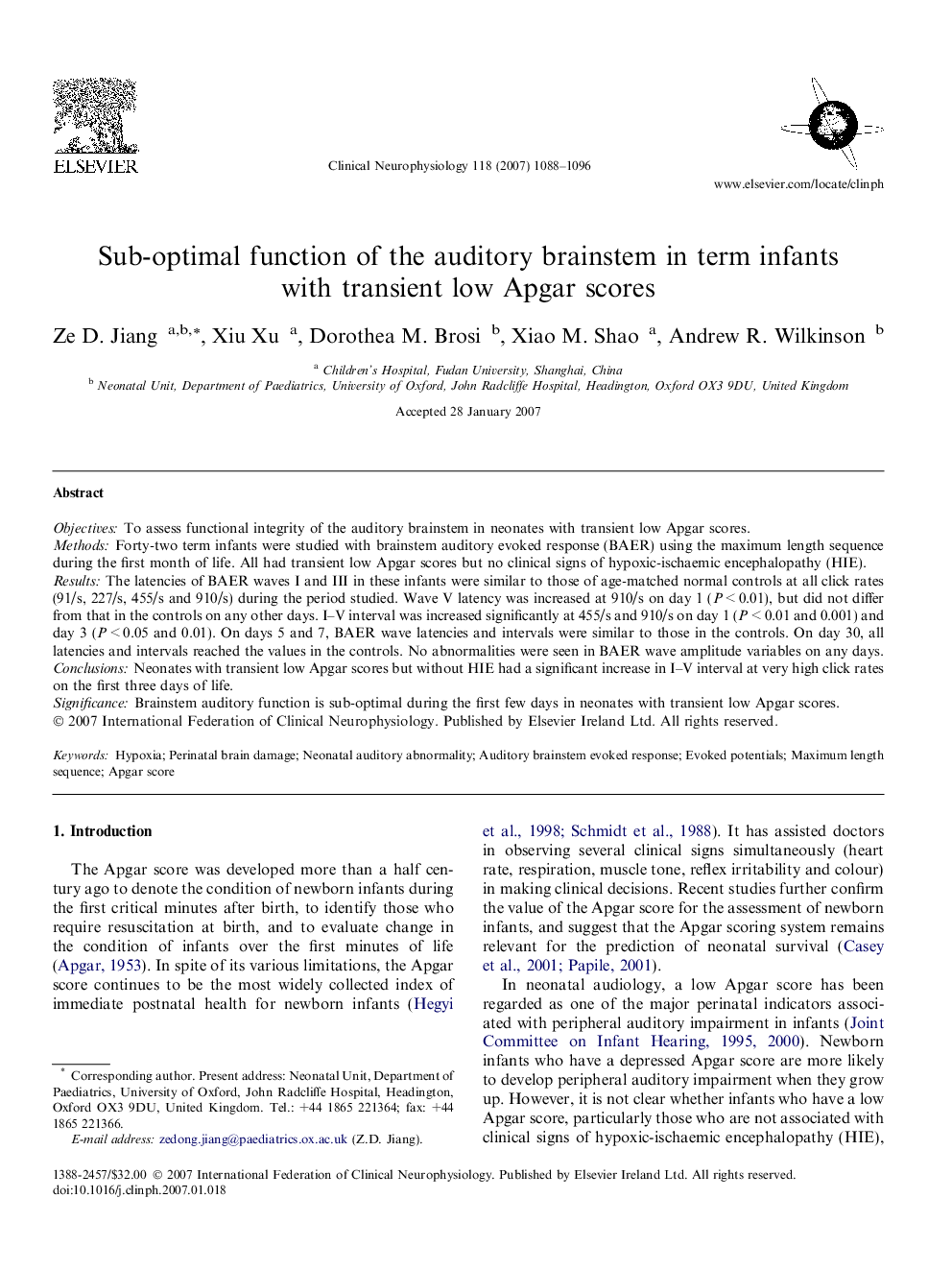| Article ID | Journal | Published Year | Pages | File Type |
|---|---|---|---|---|
| 3048530 | Clinical Neurophysiology | 2007 | 9 Pages |
ObjectivesTo assess functional integrity of the auditory brainstem in neonates with transient low Apgar scores.MethodsForty-two term infants were studied with brainstem auditory evoked response (BAER) using the maximum length sequence during the first month of life. All had transient low Apgar scores but no clinical signs of hypoxic-ischaemic encephalopathy (HIE).ResultsThe latencies of BAER waves I and III in these infants were similar to those of age-matched normal controls at all click rates (91/s, 227/s, 455/s and 910/s) during the period studied. Wave V latency was increased at 910/s on day 1 (P < 0.01), but did not differ from that in the controls on any other days. I–V interval was increased significantly at 455/s and 910/s on day 1 (P < 0.01 and 0.001) and day 3 (P < 0.05 and 0.01). On days 5 and 7, BAER wave latencies and intervals were similar to those in the controls. On day 30, all latencies and intervals reached the values in the controls. No abnormalities were seen in BAER wave amplitude variables on any days.ConclusionsNeonates with transient low Apgar scores but without HIE had a significant increase in I–V interval at very high click rates on the first three days of life.SignificanceBrainstem auditory function is sub-optimal during the first few days in neonates with transient low Apgar scores.
